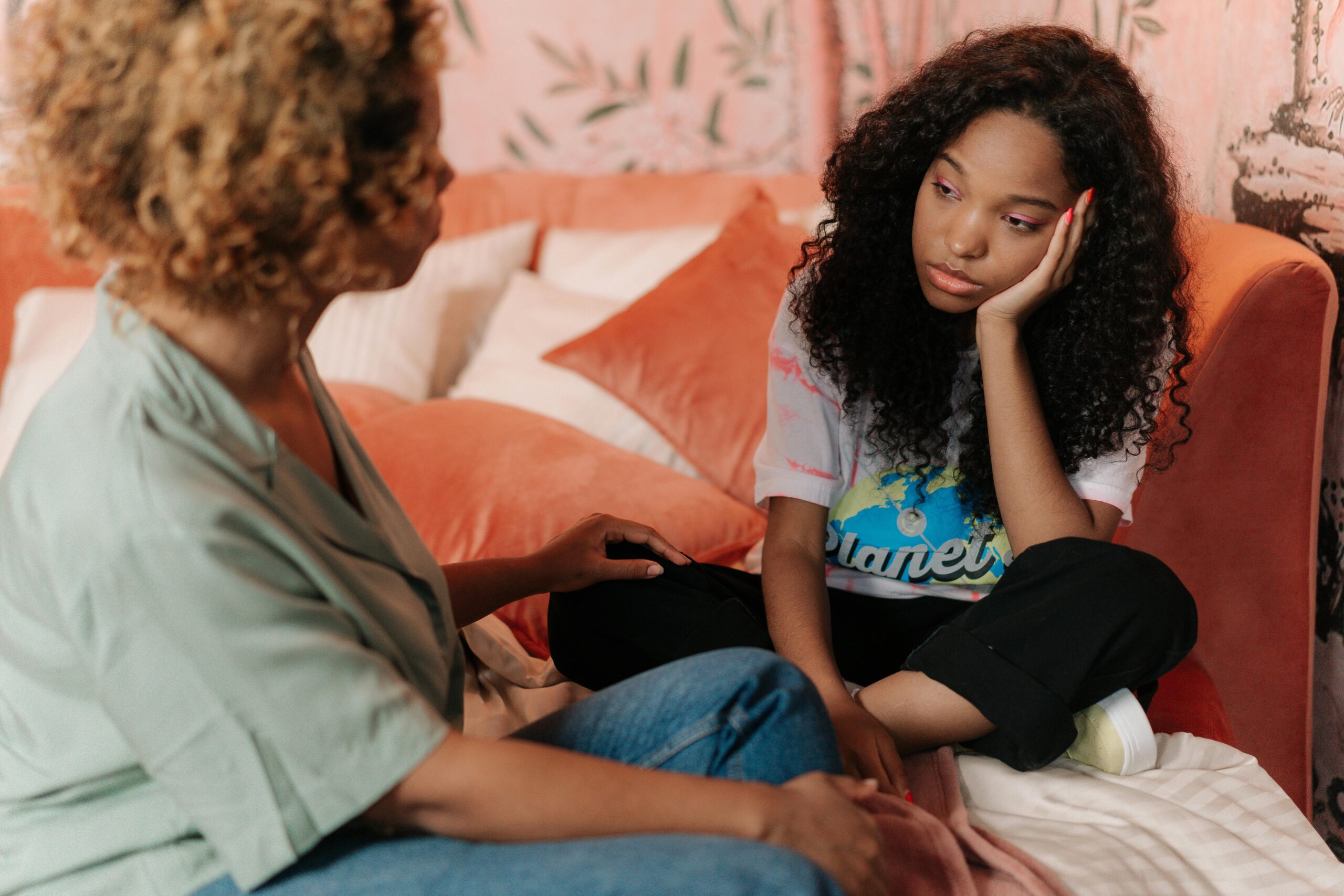
The Psychology of Spending: Understanding Your Money Habits and Triggers
Summary
This article explores the psychology behind spending habits, focusing on emotional triggers like stress, joy, and anxiety that drive impulsive purchases. We discuss common spending patterns such as rewarding oneself, escapism, FOMO, and the scarcity mindset, while offering practical, mindful strategies to help creative women entrepreneurs balance business investments with personal enjoyment. By understanding your habits, you can make intentional financial decisions, grow your business, enjoy your money, and secure your future.
Reflection Questions
- What emotions typically drive your spending—do you spend more when you’re stressed, celebrating, or feeling bored?
- Are your purchases more often a reaction to external influences, like social media or peer pressure, rather than aligned with your personal or business goals?
- How does spending affect your mental clarity and creative energy—does it boost your focus, or does it drain you?
Journal Prompt
Reflect on a recent purchase you made. What emotions were you feeling before, during, and after the purchase? How did that spending decision affect your mood, business, or personal goals? Write about how being more mindful in future purchases could shift your approach to money and align with your long-term vision.
Between managing your projects, prioritizing self-care, spending time with family, and nurturing your creativity, it’s easy to fall into spending habits that don’t always align with your long-term goals. But why do we spend the way we do? And how can understanding the psychology behind our money habits help us make better choices for both our businesses and our personal lives? In this article, we’ll explore the deeper motivations behind spending, uncover common triggers, and offer practical tips to help you start spending money mindfully—so you can enjoy your money now, invest in your future, and grow your business without burning out. Don’t worry, this article is not about eliminating credit card debt or opening a savings account. We’re going deeper than that!
The Emotional Drivers Behind Spending

Emotions play a powerful role in shaping how we spend our money (and when we choose to save money instead). Whether it’s the high of celebrating a recent success or the low of feeling stressed and overwhelmed, emotions can often lead us to make impulsive decisions.
Stress, joy, anxiety, and even boredom are all common emotional triggers that can influence spending patterns. Understanding the emotional drivers behind your spending is the first step toward making more intentional choices that align with your values and goals.
Women who own and operate creative businesses face unique challenges when it comes to spending. The need to balance business investments with personal well-being can create pressure to spend impulsively—whether it’s buying new supplies to spark creativity or treating yourself after a long, demanding week. The intersection of creative work, financial planning, and personal self-care can sometimes blur the lines between necessary and impulse purchases. Acknowledging these common triggers can help you regain control over your financial decisions.
Reflection Questions

Take a moment to reflect. What emotions drive you when you spend money? Are you buying to alleviate stress, celebrate a success, or reward yourself for a job well done? These reflection questions can help you identify patterns in your behavior and give you the clarity needed to align your spending habits with your long-term goals.
Let’s Make a Change. Here’s Your Action Item.
To get started, create a spending journal where you track not just what you buy but the emotions you feel before and after big buys and day-to-day spending. Over time, this simple practice will help you identify spending patterns and emotional triggers, allowing you to prevent impulse buys that drain your checking account and make more mindful financial decisions.
The Psychology of Common “Bad” Money Habits

Our money habits often stem from deep-rooted psychological patterns, many of which we may not even be aware of. For busy creative women balancing businesses, personal life, and future plans, it’s easy to fall into spending traps that don’t serve long-term goals.
By understanding the underlying psychology behind these financial habits, we can break free from impulsive behaviors and make more thoughtful financial decisions. Let’s explore some of the most common negative money habits and how to shift them in a way that empowers both your business and personal life.
The Reward-Response Cycle

The Reward-Response Cycle is one of the most common psychological drivers of spending. After a long week or a stressful project, we often feel we “deserve” a reward, and spending becomes the quickest way to satisfy that need.
This habit taps into the brain’s reward system, creating a sense of immediate gratification. While treating yourself isn’t inherently bad, the constant need for spending as a reward can quickly derail long-term goals. Instead, try to find ways to reward yourself that don’t involve money.
Actionable Tip: Replace spending with non-monetary treats, like taking time off, indulging in a creative hobby, or spending time in nature to reset your energy.
Escapism Through Spending
Escapism Through Spending is another habit that can sneak up on you. When life feels overwhelming or stressful, buying new things can be a temporary escape. It distracts from the uncomfortable emotions you’re trying to avoid—whether it’s frustration, dissatisfaction, or anxiety. However, using spending as an emotional escape only offers a fleeting sense of relief and can lead to financial regret later.
Actionable Tip: When you feel the urge to spend, pause and ask yourself, “What emotion am I avoiding?” Engage in calming activities like meditation, journaling, or taking a walk before making any financial decisions.
FOMO (Fear of Missing Out) Spending

FOMO (Fear of Missing Out) Spending is especially prevalent in today’s social media-driven world. The constant exposure to others’ experiences and purchases can make you feel like you need to keep up, even if it doesn’t align with your true needs or business goals. This fear of missing out can lead to impulsive buying of things that don’t serve your long-term vision.
Actionable Tip: Before pulling cash out of your savings accounts and making a purchase, take a step back and ask yourself if it truly supports your personal or business goals, or if it’s simply a reaction to outside pressures. Focusing on what’s right for you helps ground your decisions and boosts your financial health.
Scarcity Mindset

Finally, there’s the ‘Scarcity Mindset’, which is rooted in the fear that if you don’t spend now, the opportunity will never come again. This belief drives impulsive and sometimes reckless spending decisions based on fear rather than need. While it’s tempting to buy “just in case,” this mindset can lead to clutter, regret, and financial strain.
Actionable Tip: Shift your focus from scarcity to abundance by planning future purchases with intention. Understand that opportunities will come again, allowing you to make more thoughtful and strategic choices that align with your goals.
Shifting Your Money Mindset in 3 Simple Steps

Striking the right balance between reinvesting in your business and indulging in personal pleasures can feel like a constant dilemma. On one hand, there’s a need to fuel your business growth with tools, education, and resources. On the other hand, personal enjoyment—whether it’s travel, hobbies, or simply treating yourself—plays a crucial role in sustaining your creative energy. The challenge lies in knowing when to prioritize business investments and when it’s okay to enjoy the fruits of your labor. Balancing these two can create a harmonious financial life where both your business and personal needs thrive.
To find this balance, it’s essential to reflect on the values behind your financial choices. Are your spending habits aligned with your vision for both your business and your personal life? This is where a philosophical perspective can help—consider what matters most to you in the long run. Does the immediate satisfaction of a purchase serve your overall goals, or is it detracting from what you ultimately want to achieve? By reflecting on these questions and following the three steps outlined below, you can ensure that your spending aligns with your core values and ambitions.
Step 1: Identify and Overcome Those Spending Sabotages

External influences can have a powerful effect on how we spend, especially for creative entrepreneurs constantly exposed to social media, marketing, and peer pressures. It’s easy to feel like you need the latest tools, gadgets, or experiences to stay relevant in your field. However, this kind of pressure often leads to unnecessary spending on things that don’t serve your true goals. Recognizing how these external factors influence your financial decisions is key to regaining control over your spending habits.
To overcome these sneaky sabotages, it’s important to ask yourself some introspective questions: Are you buying this because it’s truly necessary for your growth, or because you’ve seen others doing it? Are you influenced by trends or comparing yourself to others in your field? By acknowledging these triggers, you can start to make more conscious spending choices that reflect your personal and professional values.
Actionable Tip
Unsubscribe from marketing emails, unfollow accounts that encourage unnecessary spending, and focus on content and influences that inspire growth in your own business and personal life.
Step 2: Embrace More Mindful Spending

Mindful spending is all about being present and intentional with your financial decisions. As a creative entrepreneur, practicing mindful money habits allows you to spend in ways that align with your personal and business goals without being driven by impulse or external pressures. This means considering each purchase not just in terms of cost but also in terms of its deeper impact—on your mental clarity, creativity, and financial stability.
Reflect on the philosophical implications of your spending: How does it affect your state of mind? Does it free up your creative energy or drain it? By approaching spending with mindfulness, you’ll not only improve your financial health but also your overall sense of well-being and creative output.
Actionable Tip
Practice mindful spending by setting a clear intention before making any purchase. Ask yourself how it benefits your personal, creative, or business goals and whether it truly aligns with your values.
Fuel your creative fire & be a part of a supportive community that values how you love to live.
subscribe to our newsletter
*please check your Spam folder for the latest DesignDash Magazine issue immediately after subscription

Step 3: Build a Spending Plan That Supports Growth
A flexible spending plan can be a powerful tool in supporting both your business and personal desires while ensuring that you’re saving for the future. Unlike a rigid budget, a spending plan adapts to the changes and growth in your business and life. It allows you to set aside money for reinvestment, personal enjoyment, and retirement, creating a healthy financial ecosystem where all aspects of your life can flourish.
To build a plan that supports growth, start by setting realistic financial goals. Whether it’s saving for retirement, reinvesting in your business, or even planning for a major life event, breaking these goals down into manageable steps will make them feel more achievable. Having a clear path forward helps eliminate the overwhelm that can often lead to impulsive spending.
Actionable Tip
Use financial planning tools or apps that help track your spending and progress toward your goals. Reassess your plan every quarter to ensure you’re on track and make adjustments as needed.
Final Thoughts: Here’s to You Gaining Financial Control!
Understanding the emotional and psychological triggers behind your spending is the first step toward gaining control over your financial decisions. By balancing business investments with personal enjoyment and practicing mindful spending, you can align your money habits with both your present needs and future goals.
The beauty of this approach is that it allows you to enjoy your hard-earned money while still securing your financial future and growing your business. Take a small step today—reflect on one emotional trigger that drives your spending, and adjust your next financial decision with intention. Every mindful choice moves you closer to a more fulfilling and prosperous path.









